#Argentinian music
Text
Louis Tomlinson listening to popular Argentinian music, on 'Algo de Música' [6.4.2024]
✓ 'Como un Diamante' — @AIRBAGoficial
✓ 'El Arriero' — @DivididosOK
✓ 'Canguro' — @wosistas
via LOUIESTREAM
8 notes
·
View notes
Text

No llueve, escupen!
8 notes
·
View notes
Text
Mates

A playlist to relax with some mix of music in spanish (mostly from Argentina), for breakfast or drinking mate with your friends! Mix of rock, indie, pop and more.
#mate#music playlist#spotify music#spotify playlist#spotify#relaxing music#argentina#argentinian music#indie en español#los pericos#los cafres#zoe gotusso#soda stereo#jorge drexler#bandalos chinos#Spotify#rock argentino#indie music#indie esp#relax#happy playlist#summer#spring#music for summer
3 notes
·
View notes
Text
Argentinian songs that i think fit with Matthew Patel
I want to clarify that this is more about the lyrics and not the artists or rhythm and yes most of these are pretty sad songs u_u
Fiesta en el infierno - Magnus Mefisto (demon chicks and all that LOL)
Persiana Americana - Soda Stereo
Arruinarse - Tan Biónica
Flaca - Andrés Calamaro
Ella dijo - Estelares
Im too lazy to elaborate but just by reading the lyrics i think they make sense idk (at least to my argentinian heart they do)
#matthew patel#scott pilgrim#argentinian music#i could elaborate but i dont think anyone cares#the matthew patel brainrot is killing me
3 notes
·
View notes
Text

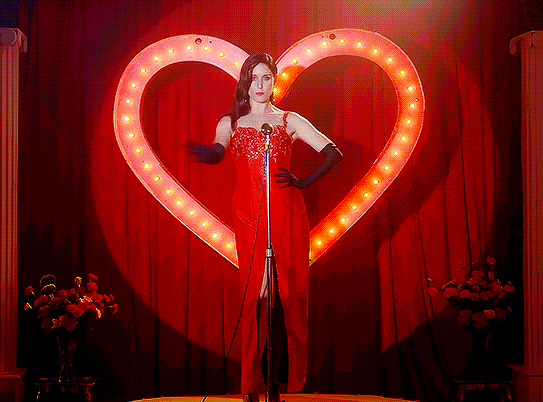
Francisca Valenzuela in Enamorada
#francisca valenzuela#miranda!#hotel miranda#chilean artist#Argentinian music#music edit#artistas de chile#music gifs#gif set#my gifs
7 notes
·
View notes
Text

Hablemos de Alfredo Le Pera.
Figura central del tango, Alfredo Le Pera fue un periodista, poeta, traductos, escritor, autor teatral y cinematografo de origen brasileño, nacido el 7 de junio de 1900 en São Paulo, Estado de São Paulo, Brasil.
Le corresponden ni más ni menos que las letras de los tangos «Amores de Estudiante», «Arrabal amargo», «Cuesta Abajo», «El día que me quieras», «Golondrinas», «Guitarra, guitarra mía», «Lejana tierra mía», «Melodía de arrabal», «Mi Buenos Aires querido», «Por una cabeza», «Recuerdo malevo», «Rubias de New York», «Silencio», «Soledad», «Volver», «Volvió una noche» (todas con música de Carlos Gardel), entre muchos otros. Además, escribió junto a el gran maestro Enrique Santos Discépolo el tango «Carrillón de la Merced».
El cine lo llevó al lado de Carlos Gardel, escribiendo el argumento de casi todas sus películas para Paramount Pictures: «Melodía de Arrabal» (1933), «Espérame» (1933), «La casa es seria» (1933), «Cuesta Abajo» (1934), «El tango en Broadway» (1934), «El día que me quieras» (1935), «Tango Bar» (1935) y todas las canciones originales de las mismas.
El compositor y director de orquesta Terig Tucci contó la siguiente anécdota acerca de la relación entre Gardel y Le Pera (cita extraída de @cultura_tango en twitter):
Gardel insistía en una cosa: los argumentos de las películas tenían que ser a medida para él. Usaba este giro con tanta frecuencia que una vez Le Pera replicó con exasperación: ¿Para que andás buscando un escritor si lo que necesitás es un sastre?
En sus letras, Le Pera trató de emplear un lenguaje que resultara comprensible a todo el mundo hispanohablante, ampliando, de ese modo, la geografía del tango. Es por esto mismo que podemos notar como sus letras, en relación a la mayoría de tangos, carecen de una presencia y protagonismo del lunfardo. Es cierto que Gardel rompía las barreras del idioma, pero es quizás también esta característica de Le Pera la que permitió que dichos tangos encontraran el éxito internacional.
Ciertamente si no hubieran contado sus letras con la música y la voz de Gardel carecerían hoy de la popularidad y el prestigio que ostentan, pero no se trata de lo que pudo haber sido, sino de lo que es. Hoy no se repara en lo reiterativo de sus figuras, y aun de su léxico, para prestar atención a la nobleza de los sentimientos que canta, a la adorable nostalgia que impregna muchas de sus estrofas, al decoro del lenguaje y a la singularísima aptitud que permitió al autor de “Volver” reducir a una coiné muy expresiva y sobre todo inteligible a todo el mundo hispanófono el habla de Buenos Aires. (José Gobello para Todotango.com)
Hermanados tanto en el arte como en la muerte, Le Pera murió junto a Carlos Gardel en la tragedia de Medellín el 24 de junio de 1935.
#musica#música#tango#carlos gardel#gardel#argentina#tango argentino#tangodance#escritores#autores#music#argentinian music#argentinian cinema#argentinian tango#alfredo le pera#30s#años 30#old cinema#paramount pictures
4 notes
·
View notes
Video
youtube
We Got This by Catnapp - Directed by Lucas Castro Pardo. [Free Download on Bandcamp]
#music#argentinian music#catnapp#cat napp#amparo battaglia lopez#amparo battaglia#video#music video#bw#david perez#lucas castro pardo#napp records
10 notes
·
View notes
Text
NEW VIDEO
Lesbiandrama - Canciones de Amor
youtube
Lucy Patané y Paula Maffía se unen en el supergrupo Lesbiandrama con un EP explosivo, lleno de poética lésbica, riffs pegajosos, ritmos contagiosos y voces potentes.
Lucy Patané and Paula Maffía join forces in Lesbiandrama (a supergroup project) with an explosive EP, filled with lesbian poetry, catchy riffs, contagious rhythms and powerful voices.
#lesbiandrama#lucy patane#paula maffia#2020s music#video#youtube#alt rock#argentinian music#indie rock#indie folk#lgbtq musicians#queer musician#musica en español#lesbian#sapphic
0 notes
Text

If you like deathmetal and hate the climate catastrophe and also like men and hate fascism go listen to my buddies of motah
1 note
·
View note
Text
Got included in compilation album. Take a listen and support chiptune!
#medniex#Checs#Brutal Design#P Crema#Latvian music#Lithuanian music#Argentinian music#Italian music#Chiptune#electronic music#8bit#Bandcamp
1 note
·
View note
Text

Portrait of Zal
paper, watercolour
2020, Saint-Petersburg
Anastasia Avraliova on Instagram
#artists on tumblr#artwork#artist#portrait#artforsale#contemporarypainting#female artists#painting#portrait of a boy#argentina#argentinien#argentinian music#human face#art contemporain#contemporaryportrait#contemporary portrait#anastasiaavraliova#watercolour#watercolourpainting#watercolour illustration#watercolour art#watercolor painting#orderportrait
1 note
·
View note
Text
127: Carlos Di Fulvio // De nadie y de todos
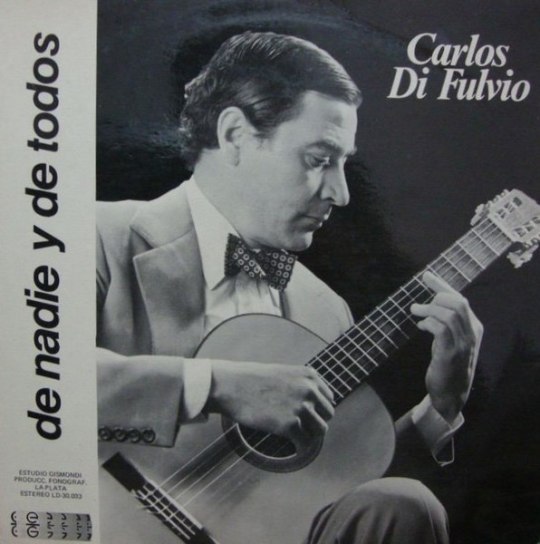
De nadie y de todos
Carlos Di Fulvio
1985, Estudio Gismondi Producciones La Plata
I fell in love with Argentinian guitar music a few years ago after purchasing a pair of LPs by Atahualpa Yupanqui, the folklorist and payador who from the ‘30s on did much to popularize his nation’s unique fusion of Spanish and Indigenous music on the domestic and international stage. My collection of the genre is very small, but I’m very fond of this 1985 release by Carlos Di Fulvio, an elegant player active since the late 1950s whom I’d recommend to anyone with an appreciation for romantic balladeers. Di Fulvio, who as of 2023 is still alive, has a Spanish Wikipedia entry that reads like the work of a PR flack (and/or, more generously, a big fan), but the following roughly translated description strikes me as fair: “Di Fulvio's circumspect and profound style is the opposite of those frenetic requests for clapping and the fluttering of ponchos: ‘I always understood that the guitar is a chamber instrument; not for crowds but for those who can be silent and listen.’” And indeed, unlike the rural originators of the folk tradition or the post-1950s generation of popular musicians who embraced its aesthetics, Di Fulvio's natty attire on the black and white sleeve of De nadie y de todos [From Nobody and From Everyone] looks more like a mid-century LP than something from the mid-‘80s.
youtube
The album is predominantly a solo guitar affair, played fingerstyle with masterly skill (see his take on Yupanqui’s “Zambita del alto verde”) and refinement. He is a fine singer as well, passionate and warm, but never excessively sentimental. The majority of the compositions are Di Fulvio’s, sometimes in collaboration with friends and fellow songwriters Mario Ponce and Ricardo Rodriguez Molina (who guests on the closing track, a lovely vidala called “Evocacion del susqueño”). As is usually the case with non-English LPs, the words are largely lost on me, but the excerpts on the back of the sleeve hint at a contemplative lyrical sensibility: “Those who walk away singing / Never fully leave.”
Like many Argentine musicians of his generation, Di Fulvio suffered under considerable censorship during his early career but today enjoys status in his own country as one of the major figures in his genre, though he seems to be little known outside of the Hispanosphere. I’m always on the lookout for more of his work, and if you happen to see any of his music in the wild it’s likely worth snapping up, as these guys tend to be consistent.
youtube
127/365
#carlos di fulvio#argentinian music#andean music#milonga#zamba#chacarera#tonada chilena#chamarrita rioplatense#solo guitar#acoustic guitar#music review#vinyl record
0 notes
Text

La juventud latinoamericana siempre ha temido por su futuro incierto. Hemos aprendido a sobrevivir diariamente, la dificultad del presente parece empeorar cada vez más. Sin embargo desde nuestros padres a nuestros abuelos se han hecho fuertes con las adversidades, la inestabilidad económica y social.
Es como si nada pudiera pararnos, ni la crisis, ni la represión, ni el gobierno ni el crimen organizado. Detrás de la fachada de edificios modernos, se esconde la antigua alma guerrera de nuestros ancestros.
0 notes
Text

Charly Garcia con una nota que le escribió Yoko Ono.
#charly garcía#argentinian art#argentina#rock argentino#🇦🇷#love#musica#lifestyle#lovers#music video#music#musician#self love#live#real life#books#life#advice#yoko ono
89 notes
·
View notes
Photo

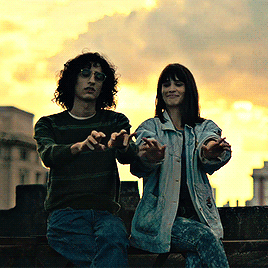
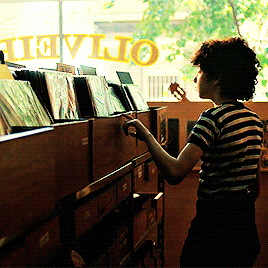



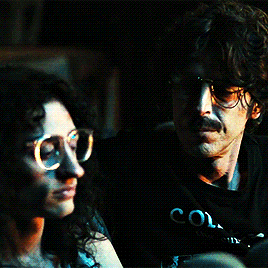



El Amor después del Amor (Love After Music) dir. Felipe Gómez Aparicio; Gonzalo Tobal
No one can and no one should live without love. This bioseries traces the passionate life and career of iconic Argentinian rock star Fito Paez. This bioseries traces the passionate life and career of iconic Argentinian rock star Fito Paez.No one can and no one should live without love.
#el amor despues del amor#love after music#chewieblog#tvarchive#dailynetflix#tvgifs#tvsource#dailyflicks#m*#mg*#gifset#this is me promoting this masterpiece for free#and promoting argentinian productions#argentina#fito paez
170 notes
·
View notes
Text
Some new sources for the lost Steely Dan song The Second Arrangement were recently uncovered, so I combined them to make a complete version. Check it out! https://youtu.be/JCN_rVLLS7E
(also check out the download in the pinned comment where I fixed a couple small issues in the mix that were irritating me.)
youtube
#steely dan#steely#Dan#second arrangement#the second arrangement#second argentinian invasion of falklands ‘hushed up’ by tony blair’s government#YouTube#music#jazz rock#guitar#Donald fagen#etc etc etc
45 notes
·
View notes